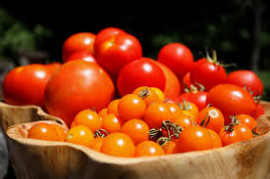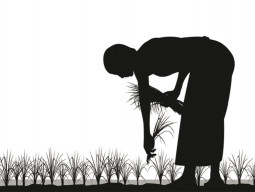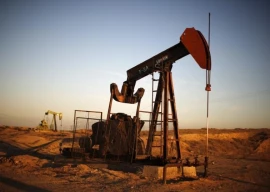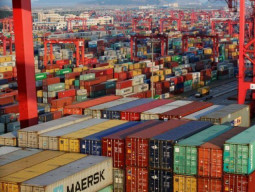
The policy environment that for several decades favoured just a few has not only resulted in a decline of industrialisation in the country, but has caused severe deficiencies in the agriculture sector in the name of industrialisation.
Pakistan has left its agriculture sector at the mercy of free market and compliance with the World Trade Organization (WTO), whereas its main competitors have managed a more aggressive and active policy, yet maintained acquiescence with all international requirements.
Irregularities of Rs1.28bn found in agriculture dept
Taking the above argument forward, it is thought-provoking to look at the comparison of Pakistan’s agriculture sector with that of our neighbour India. Agriculture is an extremely important component in the economies of both India and Pakistan. The sector contributes a significant amount to GDP and employment of both countries.
In terms of size, India’s agricultural production, however, is more than five times that of Pakistan, yet Pakistan’s per capita production across major crops is substantially higher than that of India.
Although there are similarities in the structure of agricultural production across geographically contiguous regions of the two countries, there are major differences as well.
While Pakistan has grown substantially in livestock production over the past few years, Indian agriculture has been dominated by the rise of cotton production that trebled in the last 10 years since its adoption of bio-genetic varieties.
Moreover, the geographical and climatic diversity across the two countries is a major factor behind differences in variety and pattern of agriculture produce. But perhaps the most important difference between agriculture sectors of the two countries is their contrasting policy regime.
Since 1947, India, driven primarily by the objective of achieving food security for its population, has adopted and maintained an interventionist regime in agriculture. The state continues to subsidise agricultural inputs, provides price support for 24 crops and maintains high average applied tariff rates on agriculture.
In contrast, Pakistan over the years has liberalised its agriculture sector, which now has minimal state intervention. Market liberalisation reforms have meant a gradual phasing out of subsidies and price supports and a reduction in agricultural tariff rates.
The only crop procured by the government at a fixed pre-announced price is wheat; the rest are freely traded at market prices (some exemptions were introduced for sugarcane and rice).
CPEC and the opportunity for agriculture
From the standpoint of the agricultural sector of Pakistan, this difference in policy regime has created an uneven playing field. Indian subsidies have reduced costs of cultivation, distorted prices and have not only affected the direction and volume of bilateral trade, but India has priced out Pakistan from international markets in key products.
The other active intervention has been how India has managed to successfully control its market access and yet be compliant with all international protocols. High average tariffs on agricultural goods and non-tariff barriers (NTBs), such as health and quality standards (SPS and quarantine standards), are cited as the major levers that have been used to protect the local producers.
Altogether, according to the World Bank, the Overall Trade Restrictiveness Index (OTRI) in agriculture in India was 69.5% compared to 5.8% for Pakistan. Thus, despite the fact that Pakistan has not extended MFN to India and maintains a negative list for imports from India, both the overall and agricultural trade balance is heavily tilted in India’s favour.
Revealed Comparative Advantage (RCA) calculations show that Pakistan is competitive in citrus fruit, mangoes, apricots, peaches, olives, fish and fish products. Moreover, these products have the potential to attract significant demand in Indian markets, yet we have failed to achieve that, primarily due to weak policy support and negotiation.
Consequences
The lesson to draw from the above comparison is not only that of a red balance of payments entry, but a sector that now suffers from low growth, lack of diversity and high-risk production and performance. Due to prolonged ignorance, Pakistan’s agriculture has failed to make adequate investments in the value addition of commodities.
The sector has missed out on early opportunities and first mover advantage to other competitors such as India and China, who capitalised on the graduation of international markets towards value added rather than just commodities.
The government was not able to timely push incentive frameworks that could have directed the allocation of land, labour and water to higher value uses by altering returns on modern technologies and investments.
The government’s historical intervention in the pricing, procurement and storage of agricultural commodities, along with the presence of import tariffs on input commodities, have resulted in negative effective rates of protection, reducing the incentive to shift towards high value-added production.
During the past two decades, the crop sub-sector has declined from 65% in 1990-1991 of agricultural value addition to 42% in 2010-11. The growth rate of the agricultural sector has declined, with a noticeable decline in the crop sub-sector despite higher international prices.
Response of the Punjab govt
The agriculture sector continues to be the mainstay of Punjab’s economy as it makes a substantial contribution to the province’s economic growth and employment. The performance in Punjab has also mimicked the trend experienced at the national level.
The government of Punjab, however, is actively involved in multiple initiatives aimed at increasing productivity as well as production in the sector, such as improvements in seed quality, plant protection and research expansion.
UN to fund agriculture in G-B
The flagship programme Kissan Package was introduced in September 2015, focusing on the benefits of financial inclusion to productivity in a sector prone to the vagaries of sudden price shocks.
SMART agriculture is another initiative of the Punjab government that is aimed at using the Information Communication Technology (ICT) to spur innovation and improvements in the agriculture sector.
In addition, CPEC may provide avenues that the government are considering to support the agriculture of the province. The current long-term plan for cooperation in agriculture includes areas such as (i) planting and breeding (ii) agricultural products processing (iii) storage and transportation of agricultural products (iv) infrastructure construction and (v) epidemic disease prevention and control.
However, the stance taken by us in previous articles suggests that CPEC opportunities are contingent upon government responding to the needs and building a policy framework to realise the full potential. This, response for agriculture, will be covered in our next article.
Muhammad Usman Khan is an Adviser and Dr M Amanullah is Chief Economist at the Planning and Development Department, Government of Punjab
Published in The Express Tribune, October 16th, 2017.
Like Business on Facebook, follow @TribuneBiz on Twitter to stay informed and join in the conversation.












































COMMENTS (2)
Comments are moderated and generally will be posted if they are on-topic and not abusive.
For more information, please see our Comments FAQ